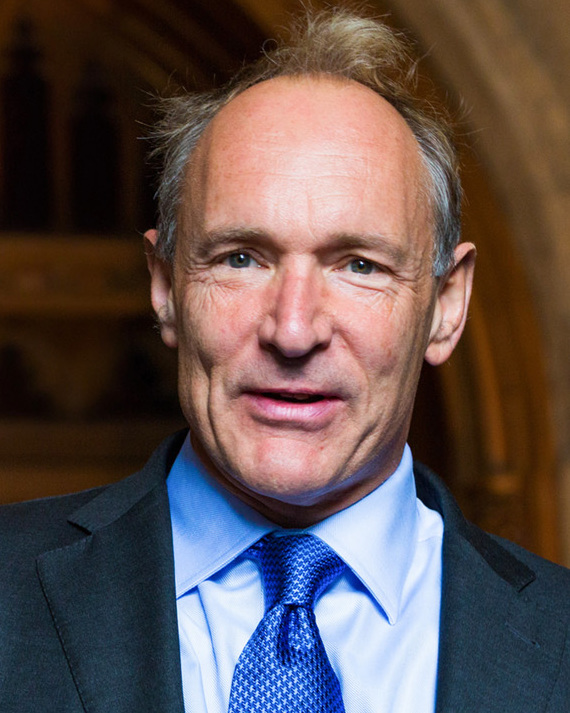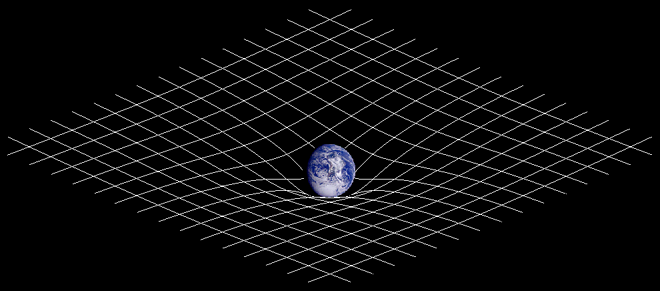The World Wide Web was invented by Sir Tim Berners-Lee in 1989. How did it evolve into what we know today, and what can we expect next?
The Story So Far
 Somewhat ironically, the best way to understand what he was aiming for is to read his book
Weaving The Web. His original vision was of a peer-to-peer medium, where every user could edit the content of every web page they went to.
Somewhat ironically, the best way to understand what he was aiming for is to read his book
Weaving The Web. His original vision was of a peer-to-peer medium, where every user could edit the content of every web page they went to.
Marc Andreessen and Eric Bina wrote the user-friendly graphical Mosaic web browser at the University of Illinois in 1993. This was the first browser to run on Microsoft Windows, and it opened up the mass market for the Web, at the expense of turning it into a broadcast medium, separating the web designer from the passive recipient of its content.
 Andreesen and Bina went on to found Netscape, which became the first company to be accused of creating a monopoly on the Web, in their case for the web browser. But, just when they were beginning to look unassailable, Microsoft destroyed their monopoly by giving away the Internet Explorer web browser bundled for free with every copy of the Microsoft Windows operating system. The regulators prosecuted Microsoft under antitrust law for this in 1998, but by then, the world had moved on, and the fear of monopolising the web has now migrated to Google for search and Facebook for social networking.
Andreesen and Bina went on to found Netscape, which became the first company to be accused of creating a monopoly on the Web, in their case for the web browser. But, just when they were beginning to look unassailable, Microsoft destroyed their monopoly by giving away the Internet Explorer web browser bundled for free with every copy of the Microsoft Windows operating system. The regulators prosecuted Microsoft under antitrust law for this in 1998, but by then, the world had moved on, and the fear of monopolising the web has now migrated to Google for search and Facebook for social networking.
As Sir Tim pointed out in his recent BBC Dimbleby Lecture, there has always been a fear of the web being monopolised, but the company accused of doing it keeps changing!
When we look back over this history, we can see that, as the world wide web evolves, it cycles between periods of decentralisation and centralisation. So we can expect the next phase of its evolution, to move from the centralisation we associate with the dominance of Google, Facebook and Amazon (and their Chinese equivalents Baidu, WeChat, Tencent, Alibaba, etc), to a new wave of decentralised services.
What will the Next Generation Web Look Like?
The biggest issues that need to be resolved include the following:
Privacy
We all like free services, but it has been observed that “if you aren’t paying, it is because you are the product”.
We will tolerate the invasion of our privacy by “free” services such as Google and Facebook up to a certain point, but then we start to lose trust, and look for alternatives. In China the Communist Party is busily building a totalitarian system of social control, using social credit systems and surveiilance to punish “social deviants”. These developments are part of what has been described as the evolution of “The New Peasantry”.
We might even be prepared to pay a modest subscription to preserve our privacy.
But that leads on to the next difficulty:
Making Payments
Making payments on the web is a pain. If you do not have a credit card, you can pretty well forget about it.
So a secure, easy to use payment solution, particularly one that allows micro-payments, would make our lives a lot easier.
Identity
Keeping track of all the different web sites we log in to and their passwords is a ghastly business. We really need a single, secure identity that seamlessly connects us to whatever services we need, integrates with the ability to make and receive payments and respects our privacy.
How is the next Generation Web going to be Built?
Sir Tim used his Dimbleby Lecture to launch the Contract for the Web. At this time, it is not clear whether this is just a well-meaning gesture, but the W3C, under the guidance of Sir Tim, does great work on defining new web standards, some of which could definitely help.
Payment and Identity services look like potential applications of blockchain technology, which I wrote about here. But first-generation blockchain platforms, such as Bitcoin and Ethereum, are struggling with issues of scalability and the expense of Proof of Work validation. These platforms are built on assumptions about truth derived from the Newtonian Paradigm, which began to be superceded in physics when Einstein published his Special Theory of Relativity in 1905.
It is a little odd to try to transform the way we make payments on the web using a technology based on ideas which are over a century out of date, but there will undoubtedly be a place for something like Ethereum in the future, even though Bitcoin will almost certainly soon be relegated to the status of a historical curiosity.
 A more promising approach is to build on a platform which is founded on the same conceptual approach as Relativity Theory. I heard about the Holochain project when I was asked to join a Skype call on 17th March 2017, to discuss the CEPTR project with my colleague John Waters and Eric Harris-Braun, one of the founders. After a bit of research, I realised that Holochain was going to be “the blockchain after the blockchain”, so I called David Atkinson, and suggested he needed to get involved with the community. He did so, and is now Commercial Director of Holo/Holochain. Nearly 2,000 Holoport and Holoport+ machines are currently being delivered to host Holo services. I got mine running on the network last week.
A more promising approach is to build on a platform which is founded on the same conceptual approach as Relativity Theory. I heard about the Holochain project when I was asked to join a Skype call on 17th March 2017, to discuss the CEPTR project with my colleague John Waters and Eric Harris-Braun, one of the founders. After a bit of research, I realised that Holochain was going to be “the blockchain after the blockchain”, so I called David Atkinson, and suggested he needed to get involved with the community. He did so, and is now Commercial Director of Holo/Holochain. Nearly 2,000 Holoport and Holoport+ machines are currently being delivered to host Holo services. I got mine running on the network last week.
I knew David because he had tracked me down in 2015 to teach him how to use the Viable System Model to improve the organisation he was running.
Here is a recent podcast in which David explains how he came to be involved in Holochain, and why we think it is going to be a key component of the next generation of the World Wide Web.
If you want to know more, send us an email or talk to us on Disqus below.


